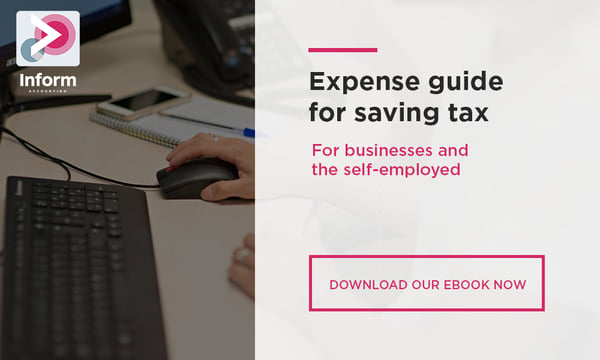BLOG PERSONAL TAX NEWS UPDATES
Navigating HMRC Scam Letters: How to Spot a Fake
In today's digital world, fraudulent schemes - particularly those involving HMRC scams - are on the rise. Many people have unfortunately experienced losing thousands to anonymous scammers.
In October 2023, in the lead up to tax return season, HMRC issued a warning to 12 million tax customers to be vigilant against tax scams, following over 130,000 complaints recorded in the year leading up to September 2023. They issued a further notice in February 2024 as scam referrals reached a new high of more than 200,000. The issue is evident and escalating, as scammers continually evolve their methods to deceive unsuspecting individuals.
This blog aims to shine a light on some of the tactics scammers use, and to provide some practice steps you can take to identify, handle and report on them effectively.
What are HMRC Scam Letters?
HMRC scams come in many forms, including bogus calls, social media messages, WhatsApp texts, phishing emails, and fake websites.
Genuine HMRC letters can be sent via direct mail or email, so the advice in this blog applies to both formats. As HMRC still communicates largely by letters, this is where many scams occur, so we’ll focus on scam letters in this blog.
How do they work?
HMRC scam letters are deceptive communications pretending to be official correspondence from HMRC, aiming to trick recipients into revealing personal or financial information or sending money to the scammer.
Identify - Spotting the Red Flags 🚩
Spotting the red flags of an HMRC scam letter, like spotting any scam, requires attention to detail. Typical signs to look out for include:
- Existing scams
- Quality of content
- Urgent or threatening language
- Expectancy of requests
- Change of bank details
Authentic HMRC communications follow specific standards, and recognizing these can help you distinguish between real and fake letters.
Let's have a look at each of these red flags in a bit more detail…
Existing scams
Preventing scams starts with education. Being aware of the typical forms that HMRC scams and phishing attempts take can make you less susceptible to them. HMRC scams can promise tax refunds, demand updates to your tax information, or falsely threaten immediate arrest for tax evasion. The HMRC website provides detailed descriptions and examples of various scams.
Quality of content
The first obvious sign of a scam letter is the quality of the language, content, and design. Look for spelling mistakes, grammatical errors, low-quality visual elements, and incorrect or outdated address details. If a letter appears unprofessional, it’s likely a scam. You can check the list of genuine HMRC contacts on their website.
Urgent or threatening language
A major warning sign is the use of urgent calls for immediate action. HMRC will not demand on-the-spot payment in their initial communication, even if you owe money. Authentic HMRC letters will typically invite you to discuss any overdue amounts.
Expectancy of requests
Scammers often send HMRC fraud letters around key tax dates. Be extra vigilant during these times and keep track of any expected correspondence from HMRC or your accountant. You can check genuine recent letters issued by HMRC on their website.
Change of bank details
Be cautious with any correspondence mentioning bank detail updates. Scammers often send letters prompting you to redirect payments to new account details that lead straight to the scammer's account. This results in financial loss and leaves your actual tax obligations unsettled. Verify official bank account details for HMRC payments on their website.
2. Handling: getting a grip of the situation 💪
Realising you’ve received a scam letter can be a bit daunting - our advice is to stay calm and remember these tips:
- Don’t click any links in an email.
- Don’t call any numbers on the letter/email.
- Don’t try to contact or respond to the sender.
- Don’t download anything from the email.
- Don’t delete the correspondence before taking a screenshot or forwarding it to HMRC.
3. Reporting scams - take action! 📝
Think you've received a fake HMRC letter or text, phone call or message? You should either:
- Contact the Self Assessment Helpline on 0300 200 3310 inside the UK (or +44 161 931 9070 outside the UK).
- Visit HMRC’s dedicated scam reporting page for relevant guidance and contacts for reporting different types of scams.
- If you are an Inform Accounting customer taking our self assessment service, get in touch with us and we can seek to help.
Summary
While HMRC scams are a serious threat, there are steps you can take to stay safe and resources available to help. Action Fraud offers a 24/7 reporting service for business fraud and scams organised by the UK Police. By staying informed and vigilant, you can better protect your business and personal data from scams.




.jpg?width=1500&height=1000&name=amy-hirschi-K0c8ko3e6AA-unsplash-(5).jpg)

